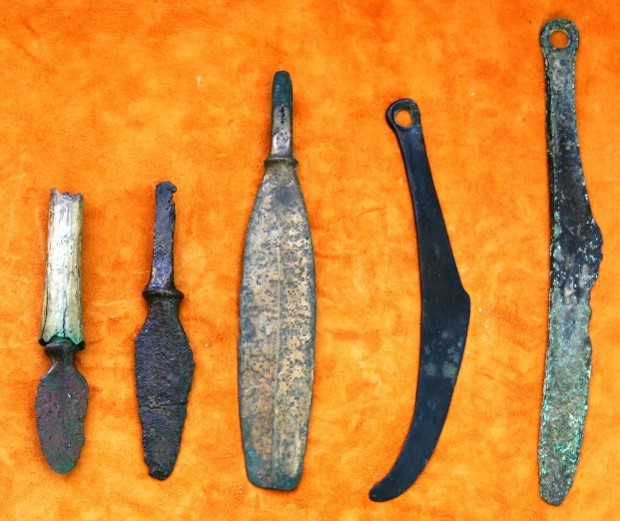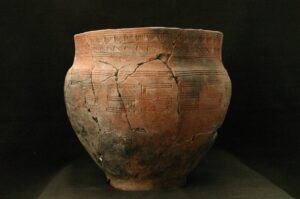ASTANA – The tribes of the Andronovo culture living on the territory of modern Kazakhstan reached a high level in metallurgy and crafts in the Bronze Age, said Kazakh archaeologist and Andronovo culture specialist Emma Usmanova during a lecture in Karagandy, organized by Qalam Global multimedia project.

Copper mining and ore smelting made the region a key supplier of bronze products for many regions of the Eurasian continent. Photo from the archives of Emma Usmanova.
The Andronovo culture from the 2nd millennium B.C.E has spread over a large territory from the Southern Urals to Western Siberia and Tajikistan, with its center located on the territory of Kazakhstan. They were skilled metallurgists who developed deposits of copper, tin, and other metals.
Taldysai settlement in the Karagandy Region became an important center of metallurgical production. Copper mining and ore smelting were established here, which made the region a key supplier of bronze products for many regions of the Eurasian continent.

Emma Usmanova during the lecture. Photo credit: Evgeny Tkachenko/Qalam Global
“Kazakhstan in the Bronze Age became a real forge for the ancient peoples of Eurasia. Oxidized ores such as malachite and cuprite became the basis for the production of bronze products, which changed the course of history,” said Usmanova.
In the Andronovo culture, metallurgy was regarded as more than a craft—it was a sacred gift. Miners and metallurgists held high social status, as their work formed the foundation of the region’s economic and cultural development. Blacksmiths were especially significant, crafting tools and weapons while also fulfilling important ritual roles in society.
“The miner and metallurgist were the creators of the age, who, working with metal, created the basis for the whole civilization. Their labor was sacred, connected with fire and spirits,” said Usmanova.
One of the most significant achievements of the Andronovo culture was the shaft furnaces used to smelt sulfide ores. These technologies made it possible to produce high-quality bronze, which gave a major boost to trade and exports.

Alongside metallurgy, the Andronovo culture saw the development of other essential crafts, such as weapon-making, pottery, and weaving. Photo from the archives of Emma Usmanova.
“The shaft furnaces used by the Andronovians were a real technological breakthrough of their time. These furnaces allowed the smelting of ore at a whole new level of quality, which greatly accelerated the bronze production process,” she said.
Metal products produced in Kazakhstan were exported to various parts of Central Asia, and even to the territory of modern Ukraine – a testament to the highly developed trade relations of the Andronovo culture with other peoples.
“Metallurgy gave a powerful impetus to the development of international trade. Bronze products made in Kazakhstan traveled great distances,” said Usmanova.
Alongside metallurgy, the Andronovo culture saw the development of other essential crafts, such as weapon-making, pottery, and weaving.


